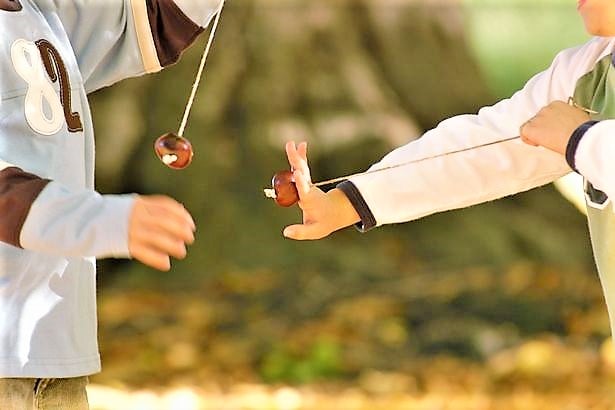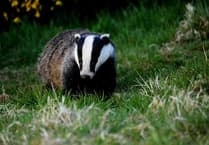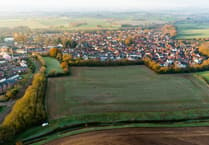WHEN I was a small child, growing up during and just after the Second World War, we mostly had to find our own amusements. As well as inventing our own games, we often reverted to traditional pursuits that often involved flowers and plants.
For instance, from about the age of three, we learned how to make daisy chains. Springtime daisies were, and thankfully still are, plentiful on lawns and verges. Later, nearby meadows supplied enough daisies to make into yards of chain (if they didn’t break) from which we could make crowns, necklaces, bracelets and even belts.
The meadows also offered buttercups with which to play the game of “Do you like butter?” by putting a buttercup flower under the other child’s chin. If the yellow petals made a golden glow under the chin, the answer was “yes”. It seems everyone likes butter!
In summer, cornfields and waysides provided poppies with which to make families of “poppy dolls”. How many of us still remember how to fold back the petals and tie them back with a grass belt to make their dresses?
Extra pieces of stalk were stuck in to make arms and legs, then the stamens were trimmed and a face was scratched onto the seedhead to produce a tiny doll to play with all day long.
We were proficient weather forecasters, guided by the opening or closing of the petals of scarlet pimpernels, also known as “Poor man’s weather glass.” This was more reliable than our “time-telling” by dandelion clocks (no child then owned a watch).
I was never much enthused by walnut-shell boats, which boys made using half a walnut, a matchstick and a paper sail. These boats were round like a coracle and had no steering. They needed a smooth pond and a slight breeze to sail anywhere. In the fast streams I frequented, they just capsized.

The only ponds near us were the former claypits, now Butlin’s boating lakes, which were forbidden ground, so the good ship “Walnut Shell” was confined to the bath, not very exciting. The well-known game of “Pooh Sticks”, played from bridges, was much more fun, even if it did lead to arguments about whose stick emerged first from under the bridge.
Children still enjoy playing “helicopters”, as I saw again last autumn in Blenheim Gardens. The throwing of sycamore keys into the air to watch them come spiralling down is quite intriguing to young minds.
In spring, we used to gather primroses into little sweet-smelling bunches for Mother’s Day or Easter, but I never had the pleasure of making cowslip balls, as described by my grandmother who had grown up in Buckinghamshire. The Exmoor area is too acid for cowslips to grow in profusion.
With schooldays, our lives became enriched with many more plants with which to play or cause mischief. For instance, you could make a whistling sound by holding a broad blade of grass, such as wood false-brome, taut between your thumbs and blowing on it.
Hollowed-out stalks of hogweed and elder made good whistles, too, and could also be used as peashooters, with ivy berries (though poisonous) making good hard “peas”. Bows and arrows were mostly made from willow.
Knives these days are banned, but in my time every child had a pocket or scout knife. They were only used for carving names on trees or shaving wood into windmill blades or propellers, which could be coloured with paints or crayons.
Ribwort plantains, with their knobbly heads, were used in the game of champions - you knocked their stems together and the one that survived longest was the champion. Burdocks offered hooked fruits, “sticky-burrs”, which could be flicked secretly onto someone’s back and hung there for a long time, like the sticky stems of goosegrass, or cleavers.
Many grasses provided us with games - wall barley inserted into a cuff would work its way up your arm and rye-grass could tell your fortune if you pulled off the grains one at a time.

Of course, at the same time we were learning which plants could be collected for food. In autumn sweet chestnuts were eagerly looked forward to. Blackberries, wild strawberries and whortleberries were gathered in profusion.
If our parents could not use them all, we could sell them to Mrs Holcombe in Minehead Market House for a few pence. And just sevenpence would get us into the Saturday afternoon showing of films at the Regal Cinema.
As everyone went bare legged until at least the age of eleven, summer or winter, boy or girl, nettle stings were frequent, but we knew how to use dock leaves to relieve the itching. Some people gathered the young nettles to eat like spinach.
It saddens me to learn that the age-old game of “conkers” has been outlawed by many schools. The game was accompanied by much ritual: the soaking of the “conker”, the fruit of the horse chestnut, in vinegar to make it hard and then the right way to strike your opponent’s offering, held at arm’s length on its string.
To me, the best aspect of all these games was that it taught us children to recognise individual plants, even though we often had our own names for them, as this knowledge lasts into our adult life. ν




